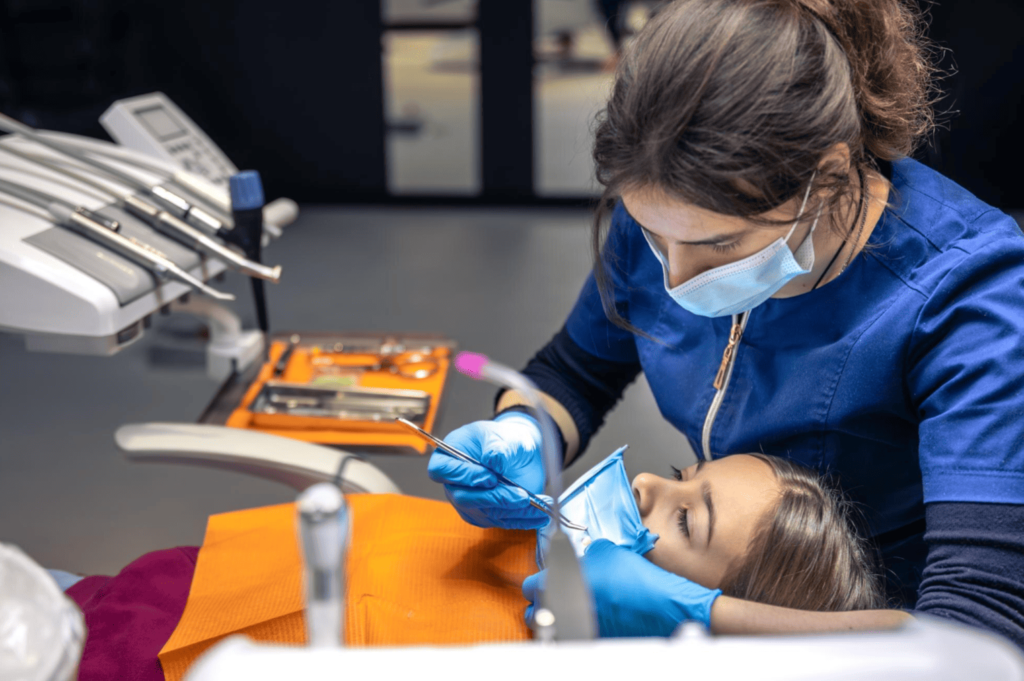Root Canal
Saving Little Teeth. Protecting Big Smiles.
If your child’s toothache simply won’t go away, it’s likely more than just a regular cavity. If decay or injury extends to the pulp which the centre of the tooth containing nerves and blood vessels bacteria in the mouth can enter the pulp, leading to infection and, ultimately, an abscess.
That’s where the root canal comes into play.At Dentistry Junior in JP Nagar, we specialize in root canals treatment for children that are gentle, quick and focused on keeping your child comfortable throughout. Our goal? Save the natural tooth and restore your kiddo’s pain-free and healthy smile through Root Canal Treatment for Kids

What Exactly Is a Root Canal for Kids?
Think of it as a rescue mission for a tooth.
Inside every tooth there is a soft center called the pulp filled with nerves and blood vessels. When that pulp gets infected whether from decay, trauma or repeated procedures we carefully remove the damaged tissue, clean the area and seal the tooth.
For kids, this process is usually done through a pulpotomy (partial removal) or pulpectomy (full removal), depending on how bad the infection is. The best part? We save the tooth, so your child can speak, chew and grow with confidence.
How Do You Know If Your Child Needs a Root Canal?
Here are some common signs:
Persistent Toothache: Especially pain that worsens at night or while chewing
Sensitivity to Hot or Cold: If your child winces while eating or drinking
Swelling or Gum Boil: Pus, swelling or redness near a tooth
Trauma to a Tooth: Injury from sports or falls that damages a baby tooth
Bad Breath or Taste: A foul taste that doesn’t go away could signal infection
If you’re unsure, bring your child in for a check-up. We’ll assess the situation with X-rays and a full evaluation.
Here’s What Happens During a Child’s Root Canal at Dentistry Junior
Step 1: Thorough Diagnosis
We use safe and child-friendly X-rays to get a clear look inside the tooth and determine how far the infection has spread.
Step 2: Gentle Local Anaesthesia
We apply a mild localized anesthetic so your child won’t feel any pain, just pressure.
Step 3: Pulp Elimination
Our pediatric dentistry specialist gently extracts the affected pulp.
Step 4: Tooth Disinfection
Alongside cleaning the tooth, we also disinfect them to ensure there must not be any bacteria.
Step 5: Filling
A filling is placed to seal the tooth and reduce any chances of infections in future
Step 6: Restoring Function
Depending on the particular situation a tooth may be strengthened and its function restored with a child-friendly crown or a tooth-colored filling.
Why Saving the Tooth Is Better Than Pulling It
You might wonder why not just extract the baby tooth?
Well, baby teeth hold space for permanent teeth. Losing them too early can lead to misalignment of adult teeth, speech issues or the need for braces later on.
That’s why we recommend extraction only when absolutely necessary. Saving the tooth helps your child eat, speak, and smile without issues.
Why Parents in JP Nagar Choose Dentistry Junior
Kid-Only Dental Experts : We’re not general dentists dabbling in pediatrics. This is our zone.
Painless Treatments : Using child-safe anesthesia, our root canals are smooth and gentle.
Local, Trusted, Loved : We’ve been serving families across JP Nagar, Jayanagar, and South Bangalore for years.
Clear Guidance for Parents : No jargon. No confusion. Just honest support every step of the way.
State-of-the-Art Tools : High-precision equipment designed for tiny teeth and growing smiles.
FAQs
With modern techniques and anaesthesia, root canals are often painless. Your child might feel some pressure, but discomfort is minimal during the procedure.
Yes, root canal treatments are considered safe and routine procedures when performed by a qualified paediatric dentist using modern techniques and anaesthesia.
The duration varies based on the complexity of the tooth’s condition. Generally, it can take one or two visits to complete the procedure.
Your child might experience slight discomfort after the procedure. Your dentist will provide instructions on managing it and oral care post-treatment.
Saving the natural tooth through a root canal is often preferable as it maintains proper dental alignment and function.

